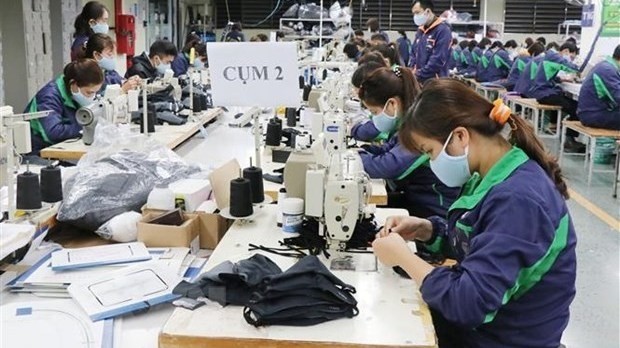Currently, most enterprises have not received new orders in May and June while many businesses are on the verge of bankruptcy. Vietnam’s textile and garment industry are facing many challenges as the market is completely broken from supply chain to consumption due to the effects of the COVID-19 pandemic.
A bright spot is the flexible and creative response of some businesses as they have taken advantage of available domestic raw and auxiliary materials to produce medical masks and protective gear for epidemic prevention and control.
Statistics show that as of April 20, Vietnam’s total mask exports reached more than 415 million, valued at more than US$63 million. The export of completely new products such as masks and medical protective equipment are achievements of the textile industry.
This is also considered a rare opportunity for businesses to hold on to opportunities to recover after the pandemic. However, US$63 million earned from the export of masks in the past four months is little compared to the US$40 billion earned each year from exporting traditional products.
Therefore, in order to increase operational efficiency, enterprises must be proactive in supplying raw materials and auxiliary materials; seek and develop new markets such as countries in East and South Asia, Eastern Europe, and countries under CPTPP, among others.
In addition, businesses need to research and invest in the production of trial orders on a small scale with higher standards regarding quality, model and fashion in order to meet consumption demand.
In the future, consumption behaviour in the world will see many changes. If, at that time, the demand for masks and medical protective products is no longer high, Vietnam’s textile and garment industry may continue to suffer..
Therefore, in addition to manufacturing and supplying countries that with masks and medical protective gear, businesses need to change and innovate in order to meet consumption demand after the pandemic.
It is also necessary to focus on negotiating with suppliers to transfer the supply of raw materials and auxiliary materials to Vietnam to meet the various requirements of origin and benefit from tariff agreeements such as the EVFTA, CPTPP, etc.
Enterprises are also in need of support from the State and ministries, branches must accelerate disbursement of credit packages; exemptions from social insurance and trade union fees from May to the end of this year must be implmeneted and rescheduling of principal repayment debts must be facilitated, in order to create momentum for businesses to revive after the pandemic and strengthen the position of Vietnam's textile industry in the global supply chain.
















